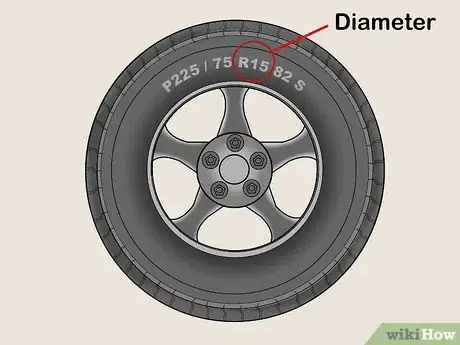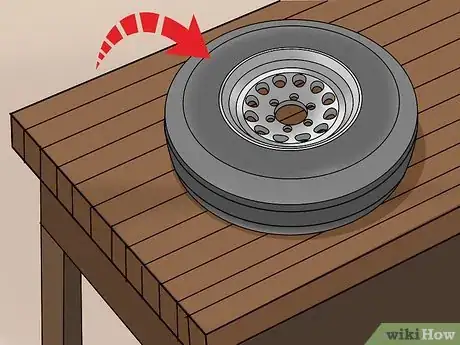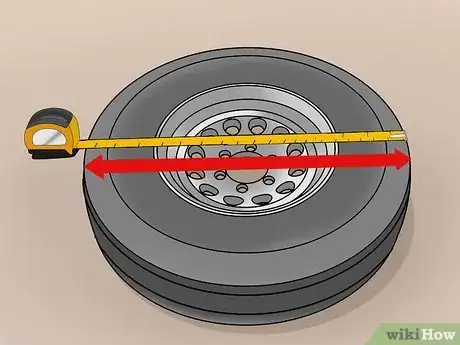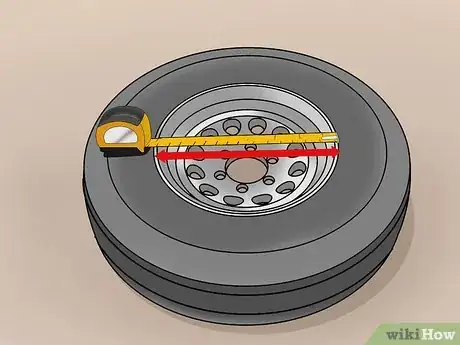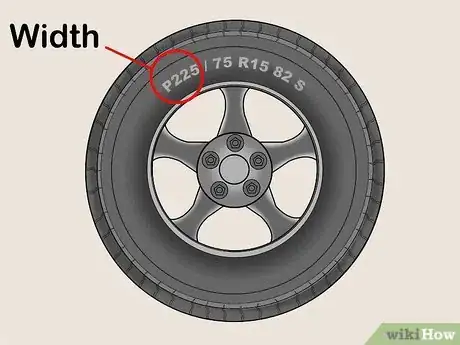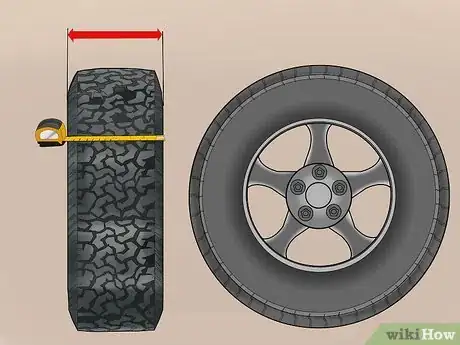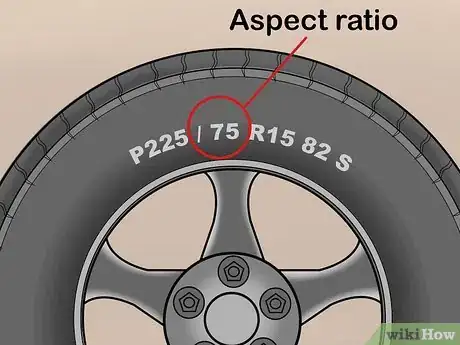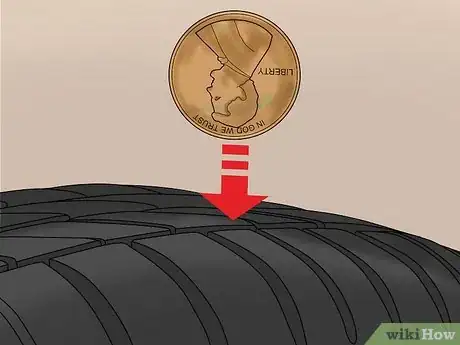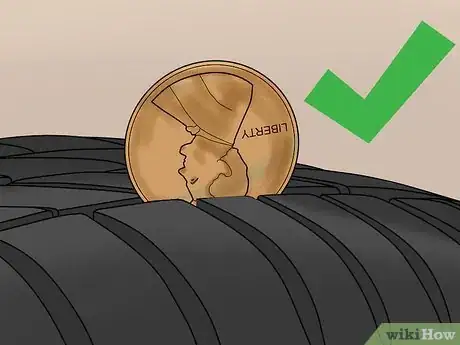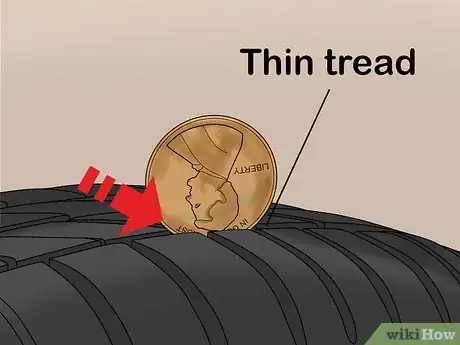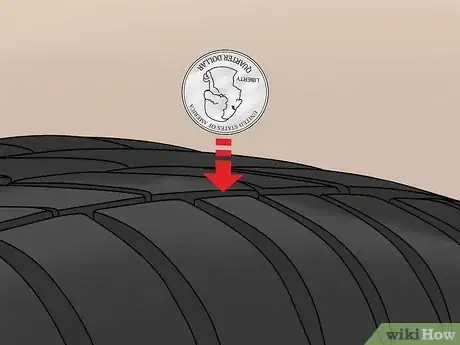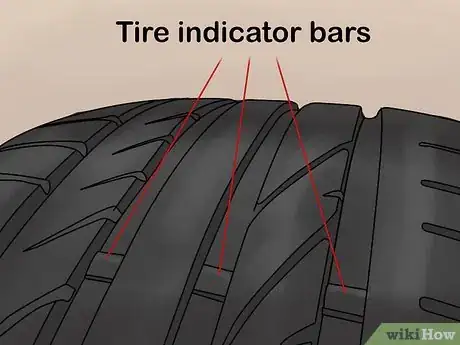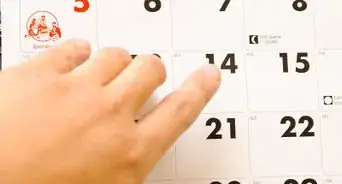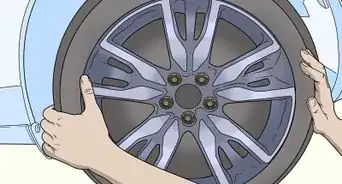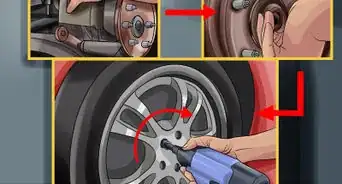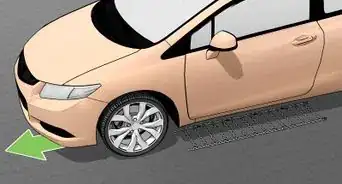This article was co-authored by Howard Fleischmann. Howard Fleischmann is an Automotive Tire and Repair Specialist and the CEO of Community Tire Pros & Auto Repair, with ten locations throughout Phoenix, Glendale, Yuma, and Casa Grande, Arizona. Howard specializes in full-service auto repair and tire replacement and care for domestic/imported vehicles and large trucks. Howard’s dedication to Community Tire Pros & Auto Repair has earned their team multiple awards and features including the 2021 Phoenix Magazine AZ State 48 “Best of the Best!”, the 2020 “Best of Phoenix” in Auto Repair, the 2013 Master SBD award, the 2013 National “Top Shop” award by Tire Review, the 2012 Diversity Champions Phx Business Journal, the 2009 BBB Ethics award, the 2008 Phx Chamber of Commerce Impact Award -” Small Business of the Year”, and the 2008 ASU Spirit of Enterprise award. Howard is often referred to as “The Car Guy” for local TV stations and is a regular on TV’s Channel 3 Sunday, Good Morning Arizona monthly.
There are 9 references cited in this article, which can be found at the bottom of the page.
This article has been viewed 48,097 times.
Getting a tire's measurements is an important part of selecting good tires for a vehicle. If the tire's measurement information is not printed along its sidewall, you may not know which measurements to take or why. If it is, you may not know how to read the sidewall numbers. Learn the importance of measuring and how to measure diameter, width, aspect ratio, and tread depth before you purchase tires to find the ideal choice.
Steps
Measuring Wheel Diameter
-
1Check the tire's sidewall to read its wheel diameter. The wheel diameter is often, though not always, printed on the tire's sidewall. You will be able to spot the diameter number by looking for the number followed after a capitalized "R."[1]
- The tire diameter may be printed in inches or meters, depending on your country.
- If the wheel diameter is 15 inches (38 cm), for example, the diameter will read as "R15" on the number string.
-
2Lay the tire down on its side to measure wheel diameter manually. If you cannot find a wheel diameter number on your tire's sidewall, measure it yourself. Take the wheel out of your car, then lay it on a flat, smooth surface. A table or an area of ground with no incline works well for measuring tire diameter.Advertisement
-
3Measure the tire from top to bottom for a precise measurement. Take the measurement over, not to the side of, the hub. Depending on your needs, you may also measure the hubcap in a similar way: start at the bottom of the hubcap and finish measuring at its tip.[2]
- Use a stiff tape measurer to calculate the wheel diameter. Looser tape measures may not provide as accurate of a diameter calculation because they can bend or tilt.
-
4Check your hubcap diameter after you measure wheel diameter. Hubcap diameter is measured similar. Instead of from the top to bottom of the tire, however, measure from tip to end of the hubcap. Make sure to take your measurement over, not around, the hubcap here as well.
Determining Tire Width and Aspect Ratio
-
1Check for the tire width along its sidewall. Often, the tire width will be printed along with other measurements. In most countries, the tire width is printed in millimeters or meters. The tire width number is usually printed directly following a capitalized "P."[3] [4]
- If your tire width is 1.75 metres (69 in), for example, the width number will usually be written as "P175."[5]
-
2Measure your tire width from one end of the tire to the other. If you can't find a tire width number on the sidewall, calculate it on your own.The tire width is measured from endpoint to endpoint. If your tire is not connected to your car, stand it vertically while you measure. Take your measuring tape, and record the measurement you get from one end of the tire to the other.[6]
- Prop your tire against a straight object if it does not stand up on its own.
-
3Check for the aspect ratio along the sidewall as well. The tire aspect ratio is the ratio of the tire height divided by the tire width. On a tire sidewall, the aspect ratio will generally be written after a backslash ("/").[7]
- Aspect ratios are written in percentages.[8]
- If your aspect ratio is 65%, for example, the number will likely be written as "/65."
-
4Divide your width by your diameter to calculate aspect ratio. Calculate aspect ratio manually if the number is not contained on the sidewall. When you've divided and come to a number, convert that number from a decimal to a percentage. This is your aspect ratio number. If your width is 4 inches (10.2 cm) and your diameter is 24 inches (61 cm), for example, then your aspect ratio is 60%.[9]
- Make sure you calculated the diameter and width in the same measurement system (e.g. inches or meters) before you calculate the aspect ratio.
- Use this online aspect ratio calculator as an alternative: https://www.calculator.net/ratio-calculator.html
Checking Tire Tread Measurements
-
1Position a penny into a groove on your tire tread. Tire tread measurements are taken more approximately than other tire measurements. Take your penny and stick it into a groove in your tire. Position it so that Lincoln's head is sticking into the tread.[10]
- If you purchased your tires at different times, check all four tires separately.
-
2Check whether the tire grooves cover Lincoln's hairline. The tire grooves should not cover the entire head but should cover the entirety of Lincoln's hair. If it is, your tire does not need to be replaced.
- New or used tires with this measurement are safe to purchase.
-
3Replace your tires if Lincoln's hairline is left uncovered. If you can see his entire head sticking out, or if you can see part or all of his hairline, your tread is too thin. Purchase new tires as soon as you notice that they are worn to prevent blowouts or other emergencies.[11]
- Do not purchase used tires that show Lincoln's hairline or his entire head. Their tread is too thin.
-
4Measure your tire tread with a quarter as an alternative. Stick your quarter into the tire groove in the same way as you inserted the penny, with George Washington's head first. If your tread covers the tip of Washington's head, it is safe to drive on. If there is a gap between the tire tread and Washington's head, replace your tires as soon as you can.[12]
- If you prefer not to keep pennies on hand but want to perform a coin test, quarters may be ideal. Quarters, however, offer a less precise measurement than pennies because it may be hard to tell if the tire tread is touching Washington's head.
-
5Look for your tire's indicator bars if you do not have access to US currency. Tires often have indicator bars that can help you check how worn your tire tread is. These small bars built into your tire begin revealing themselves as your tire becomes too worn. Replace your tires if you can see the indicator bars partially or fully.[13]
- If you are located in the United States, check your indicator bars and perform the penny or quarter test as an added precaution.
Community Q&A
-
QuestionWhat are the measurements of the tires of the Renault 16 1965?
 Peter MissickCommunity AnswerIf you are referring to a 1965 Renault 16 De Luxe, here are the measurements: Standard tire size: 145 - 355; tire width (mm): 145. Tire sidewall factor: 90. Rim size (in): 14. Total wheel diameter (mm / in): 617 / 24.3.
Peter MissickCommunity AnswerIf you are referring to a 1965 Renault 16 De Luxe, here are the measurements: Standard tire size: 145 - 355; tire width (mm): 145. Tire sidewall factor: 90. Rim size (in): 14. Total wheel diameter (mm / in): 617 / 24.3. -
QuestionWhat is the measurement of the tires of the Alfa Romeo 950 truck 1957?
 birdy lauCommunity AnswerMost truck tire sizes are indistinguishable from car, SUV, or CUV tire sizes. The basic format is equivalent: Section width (in millimeters) “225,” aspect ratio of sidewall “45,” then tire and wheel diameter “17.”new cars information.
birdy lauCommunity AnswerMost truck tire sizes are indistinguishable from car, SUV, or CUV tire sizes. The basic format is equivalent: Section width (in millimeters) “225,” aspect ratio of sidewall “45,” then tire and wheel diameter “17.”new cars information. -
QuestionIf the tire with is P175, that's likely to be 0.175 meters, 17.5cm. I doubt your tire is 1.75 meters wide.
 Darren SobelsCommunity AnswerThe number 175 in a tire size (e.g. 175/55R16) is the width of the tread of the tire in millimeters (mm). A tire which has a size of 205 as the first number is 205mm wide and wider than the 175mm tire. The second number (55 in this example) is the value of the height of the sidewall of the tire. It is represented as a ratio of the tire width and referred to as series. For the 175mm width tire a 55 series tire is higher than a 45 series tire. The last number represents the rim size of the tire. It is measured in inches. In this example it is a 16 inch rim. So, for a tire size of 175/55R16, this tire is 175mm wide, has a 55 series sidewall height and mounts to a 16 inch rim.
Darren SobelsCommunity AnswerThe number 175 in a tire size (e.g. 175/55R16) is the width of the tread of the tire in millimeters (mm). A tire which has a size of 205 as the first number is 205mm wide and wider than the 175mm tire. The second number (55 in this example) is the value of the height of the sidewall of the tire. It is represented as a ratio of the tire width and referred to as series. For the 175mm width tire a 55 series tire is higher than a 45 series tire. The last number represents the rim size of the tire. It is measured in inches. In this example it is a 16 inch rim. So, for a tire size of 175/55R16, this tire is 175mm wide, has a 55 series sidewall height and mounts to a 16 inch rim.
References
- ↑ https://www.tireindustry.org/reading-tire-sidewall
- ↑ https://www.youtube.com/watch?v=t2eeldJzc1A&feature=youtu.be&t=18
- ↑ http://www.marathonind.com/images/measure-big.jpg
- ↑ Howard Fleischmann. Automotive Tire & Repair Specialist. Expert Interview. 4 June 2021.
- ↑ Howard Fleischmann. Automotive Tire & Repair Specialist. Expert Interview. 4 June 2021.
- ↑ https://www.youtube.com/watch?v=Beszen5wIrM&feature=youtu.be&t=20
- ↑ https://www.tireindustry.org/reading-tire-sidewall
- ↑ Howard Fleischmann. Automotive Tire & Repair Specialist. Expert Interview. 4 June 2021.
- ↑ https://www.tireindustry.org/reading-tire-sidewall
About This Article
The easiest way to find your tire’s measurements is to check the sidewall of the tire, which you can do without taking the tire off. To find the diameter of your tire, look for a capitalized “R” followed by a number, such as R15. Then, check the width of your tire by looking for a capitalized “P” followed by a number, such as P175. If your tire doesn’t have this information printed on the sidewall, it’s best to remove the tire from your car and measure it with a tape measure. To find the diameter, lay the tire on its side and measure across the side of the tire. Then, get the width by measuring around the outside of the tire. For more tips, including how to measure the treads of your tire, keep reading!
